Considering Doing a Chick-Hatching Project? Please Don’t.
What are chick-hatching projects?
School chick-hatching projects, ostensibly designed to teach students about life cycles, involve placing fertilized chicken eggs in classroom incubators until they hatch. The eggs are purchased from commercial hatcheries. Pre-hatched chicks may also be included in the “package” so that students can watch and hold them while waiting for the eggs to hatch. Bright, invasive lights are sometimes used to view the developing embryos during the incubation period. After the project is completed, surviving chicks are typically sent back to the provider. Most commercial hatcheries avoid mentioning the fate of the returned chicks in their sales pitches, because the chicks are likely killed to prevent potential disease transmission to the companies’ flocks.
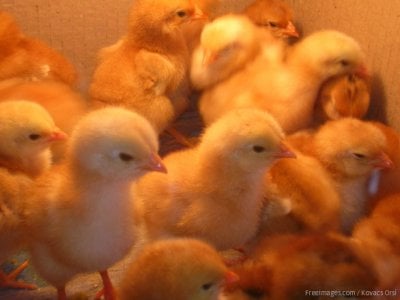
Here are the top five reasons NEVER to purchase chicks for your classroom.
1. Chickens aren’t teaching tools.
Chickens love their families, have complex social bonds, and value their lives, yet when used as classroom teaching tools, they’re denied everything that’s natural and important to them. Even before they’re born, chicks need their mothers, who carefully rotate the eggs up to 30 times a day to maintain the proper temperature, moisture, and positioning. Those grown in an incubator can become sick and deformed as they develop, because their needs aren’t met during incubation. For example, their organs can stick to the sides of the shell if the eggs aren’t rotated properly. If the eggs hatch on weekends when no one is at school, the chicks are left on their own until someone checks on them.
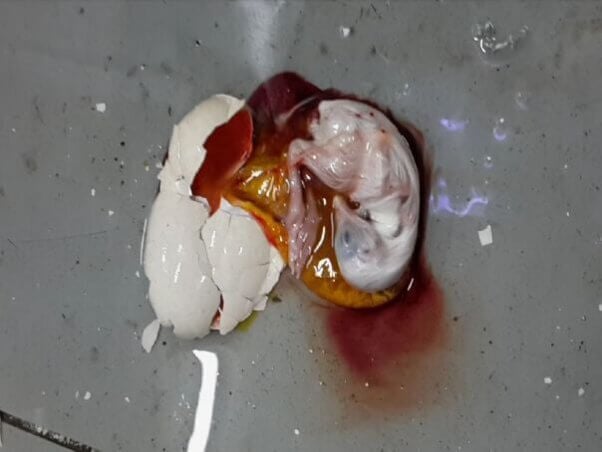
2. They are intelligent and have complex social structures.
Scientists agree that chickens’ complex social structures and good memories are undeniable signs of advanced intelligence comparable to that of mammals. People who have spent time with chickens know that each bird has a different personality that often relates to his or her place in the pecking order. Some are gregarious and fearless, while others are more shy and watchful. Some enjoy human company, while others are standoffish or even a bit aggressive. Just like dogs, cats, and humans, each chicken is an individual with a distinct personality. But in chick-hatching projects, the birds are treated as nothing more than tools in classroom experiments, which teaches students the wrong lessons.
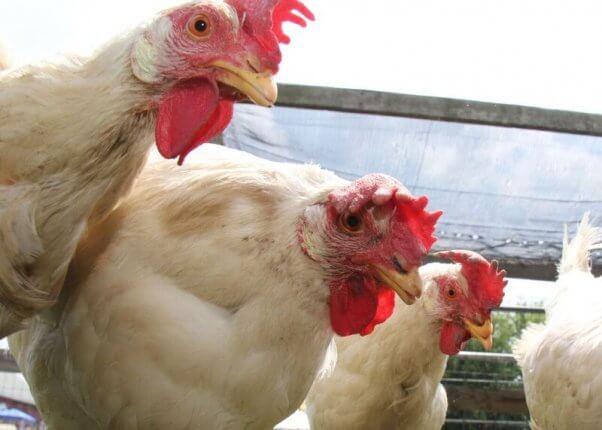
3. Their communication skills are impressive.
Chickens have more than 30 types of vocalizations, and a mother hen begins to teach these calls to her chicks before they even hatch. She clucks softly to them while sitting on the eggs, and they chirp back to her and to each other from inside their shells. Depriving animals of a chance to develop these sorts of bonds—for any reason—is unacceptable and negates the educational objective, which is to develop a curiosity about and respect for life.
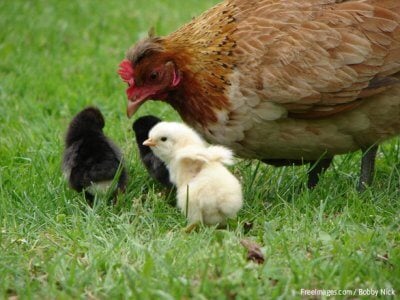
4. Educators are saying no.
Many educators have stopped using chick-hatching projects to teach embryology and developmental biology because of concerns about animal welfare and student safety.
According to the Centers for Disease Control and Prevention (CDC), chicks can look healthy but still harbor salmonella. Children who hold, cuddle, or kiss them—or even touch things around the birds’ living area—can be exposed to the bacteria. The CDC warns that young children are especially at risk for illness because their immune systems are still developing and because they’re more likely than others to put their fingers or other items into their mouth.
Fecal tests have revealed that chicks used in classrooms have carried E. coli and four different strains of salmonella, one of which was antibiotic-resistant. Any school that conducts chick hatchings is a potential breeding ground for these and other pathogens, including West Nile virus, which domestic fowl can contract. After learning about these risks, Seattle Public Schools implemented a ban on all hatching projects.
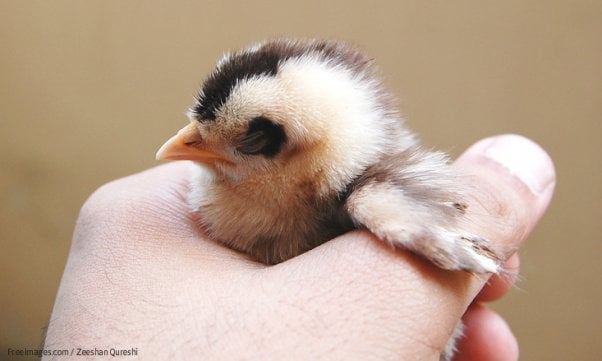
5. Chicks are killed once the project is over.
Chickens are arguably the most abused animals on the planet. In the U.S., more than 8 billion chickens are killed for their flesh each year, and about 360 million hens are used for their eggs. The vast majority of these animals spend their lives in total confinement—from the moment they hatch until the day they’re killed. It’s unconscionable to bring more lives into this cycle of suffering.
Many schools don’t consider the fate of the chicks once the experiment is over, since most providers simply say, “Send them back.” But commercial breeding operations can’t risk bringing pathogens back to their farms, so most chicks are likely killed once the project is done.
Texas A&M’s teacher’s hatching guide says, “Weak or deformed chicks should be disposed of humanely.” Yet it doesn’t explain how to kill the weak chicks or what to do with the healthy ones.
Local animal shelters, already overwhelmed with homeless dogs and cats, are ill-prepared to take in or re-home chicks.
Teaching children to care for chicks they will undoubtedly become attached to and who will likely later be killed sends the very dangerous message that it’s acceptable to use and harm weaker beings for our own fleeting purposes.
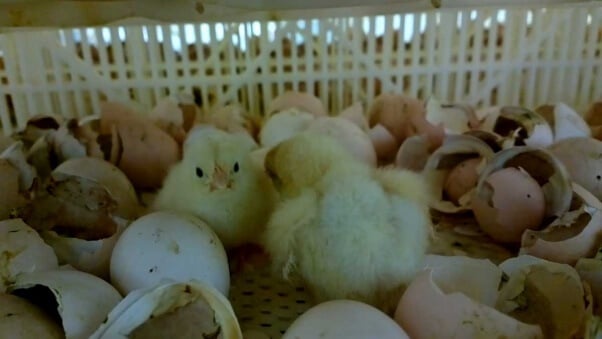
Modern, Humane Alternatives
For educational value, chick-hatching projects miss the mark. Thankfully, there are several free and paid programs that meet curricular objectives and save birds:
- Cornell Lab Bird Cams has amazing videos of red-tailed hawk eggs hatching and more on YouTube.
- Virginia Tech’s “4-H Virtual Farm” Chicken Embryo Development site includes video of chick embryo development, still images, and text on the development process.
- The University of Illinois’ “Chickscope” provides diagrams, images, and detailed information on each day of chicken embryo development in the 21-day process.
- The NOVA Online Odyssey of Life website includes a video clip of chick embryo development.
- Learning Resources sells a set of 21 egg replicas that show development day by day.
- Egg: A Photographic Story of Hatching by Robert Burton (with photographs by Jane Burton and Kim Taylor) looks at the egg-hatching process through close-up photographs. The book follows the first crack in the eggshell to the moment that the chick breaks out of the egg.
- A Home for Henny, written by United Poultry Concerns founder Karen Davis and illustrated by Patricia Vandenbergh, tells the story of a grade-school chick-hatching project and a chick, Henny, who was going to be disposed of but who finds a happy home at a sanctuary, thanks to a student named Melanie and her parents.
- Virtual Incubator guides students through every step of the 21-day chick-hatching process in one sitting. Students are required to monitor the health of the virtual eggs, weigh and rotate them, and check the humidity of the virtual incubator.
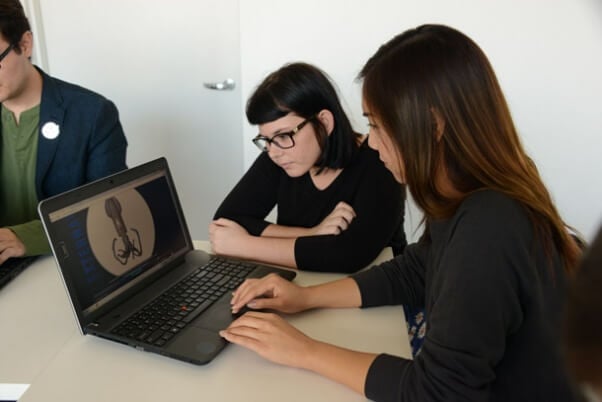
How to Help Chickens
- Pledge NEVER to hatch chicks in your classroom, and share information with your students and staff about why you choose to use humane alternatives instead.
- If your school is using animals as teaching “tools,” voice your objections. If you’re comfortable with doing so, write a letter to or have an open conversation with the staff members involved. Explain the cruelty inherent in the egg industry and in hatching chicks in the classroom, the many risks involved, and the message that using animals in the classroom sends to students.
- You can even write a letter to your principal and school board asking them to implement a policy banning hatching projects in the district. Be sure to include all the pertinent information, and feel free to contact us if you need any assistance.
- If chick-hatching projects are already underway at your school, please make the compassionate decision to find a reputable sanctuary where the chickens can live peacefully and not be killed for their flesh or used for egg laying.
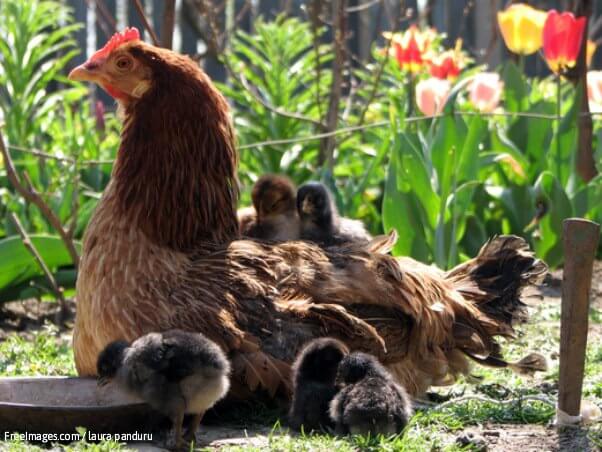
Become a TeachKind teacher and sign up for tips and more on humane education!
By submitting this form, you’re acknowledging that you have read and agree to our privacy policy and agree to receive e-mails from us.





